Gray Level TransformationAll Image Processing Techniques focused on gray level transformation as it operates directly on pixels. The gray level image involves 256 levels of gray and in a histogram, horizontal axis spans from 0 to 255, and the vertical axis depends on the number of pixels in the image. The simplest formula for image enhancement technique is: Where T is transformation, r is the value of pixels, s is pixel value before and after processing. Let, 'r' and 's' are used to denote gray levels of f and g at(x,y) There are three types of transformation:
The overall graph is shown below: 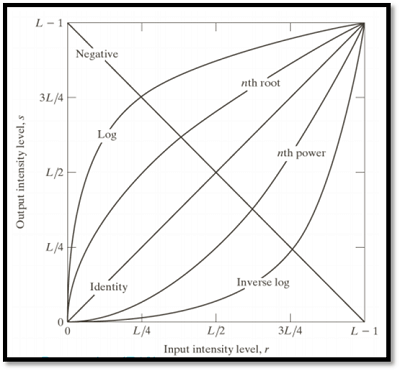
Linear TransformationThe linear transformation includes identity transformation and negative transformation. In identity transformation, each value of the image is directly mapped to each other values of the output image. Negative transformation is the opposite of identity transformation. Here, each value of the input image is subtracted from L-1 and then it is mapped onto the output image 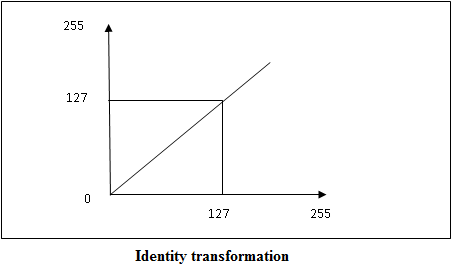
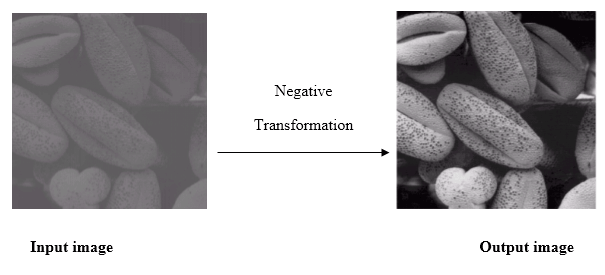
Logarithmic transformationsLogarithmic transformation is divided into two types:
The formula for Logarithmic transformation Here, s and r are the pixel values for input and output image. And c is constant. In the formula, we can see that 1 is added to each pixel value this is because if pixel intensity is zero in the image then log(0) is infinity so, to have minimum value one is added. When log transformation is done dark pixels are expanded as compared to higher pixel values. In log transformation higher pixels are compresses. 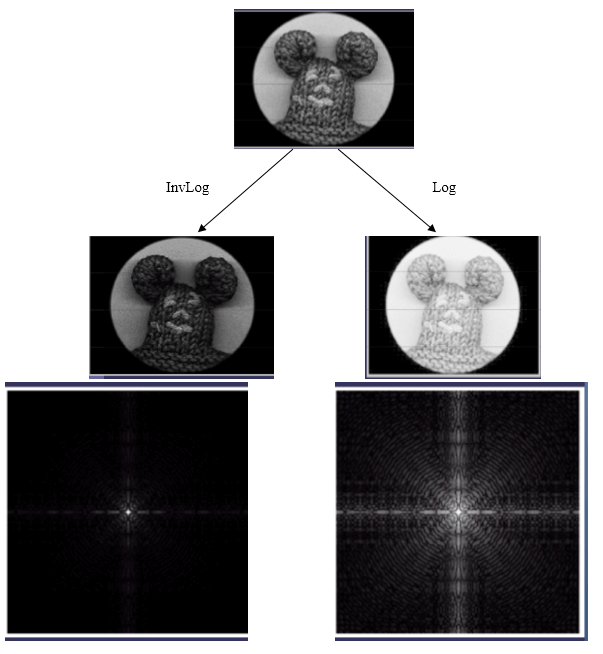
In the above image (a) Fourier Spectrum and (b) result of applying Log Transformation. Power - Law transformationsPower Law Transformation is of two types of transformation nth power transformation and nth root transformation. Formula: Here, γ is gamma, by which this transformation is known as gamma transformation. All display devices have their own gamma correction. That is why images are displayed at different intensity. These transformations are used for enhancing images. For example: Gamma of CRT is between 1.8 to 2.5 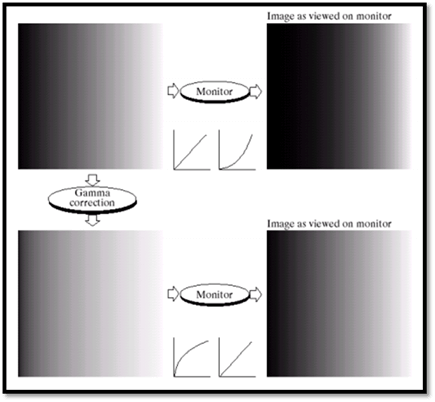
Image EnhancementThe main objective of Image Enhancement is to process the given image into a more suitable form for a specific application. It makes an image more noticeable by enhancing the features such as edges, boundaries, or contrast. While enhancement, data does not increase, but the dynamic range is increased of the chosen features by which it can be detected easily. In image enhancement, the difficulty arises to quantify the criterion for enhancement for which enhancement techniques are required to obtain satisfying results. There are two types of Image enhancement methods:
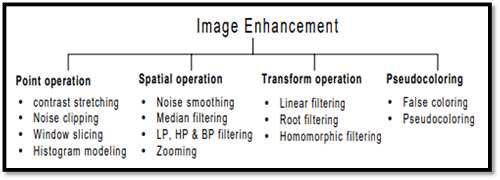
Spatial domain enhancement methodsSpatial domain techniques are performed on the image plane, and they directly manipulate the pixel of the image. Operations are formulated as: Where g is the output image, f is the input image, and T is operation Spatial domain techniques are further divided into 2 categories:
Frequency domain enhancement methodsFrequency domains enhance an image by following complex linear operators. Image enhancement can also be done through Gray Level Transformation.
Next TopicConcept of Convolution
|
 For Videos Join Our Youtube Channel: Join Now
For Videos Join Our Youtube Channel: Join Now
Feedback
- Send your Feedback to [email protected]
Help Others, Please Share










